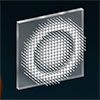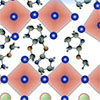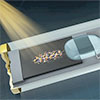Nov 29, 2021 (Nanowerk News) When humans look at a scene, they see objects and the relationships between them. On top of your desk, there might be a laptop that is sitting to the left of a phone, which is in front of a computer monitor. Many deep learning models...
Researchers shrink camera to the size of a salt grain
Nov 29, 2021 (Nanowerk News) Micro-sized cameras have great potential to spot problems in the human body and enable sensing for super-small robots, but past approaches captured fuzzy, distorted images with limited fields of view. Now, researchers at Princeton University and the University of Washington have overcome these obstacles with...
Directional management of interface defects achieved in perovskite solar cells
Nov 29, 2021 (Nanowerk News) Organic-inorganic halide perovskite materials have excellent optical capture capacity and carrier conductivity. Perovskite solar cells, with amazing power conversion efficiency, show great application prospects. However, a large number of unfavorable defects, growing up after or during annealing process due to their ionic nature, would lead...
Surface science methodology reveals relaxation and failure mechanisms of energy storage devices
Nov 29, 2021 (Nanowerk News) Long cycle life and high safety are required for energy storage devices (ESDs) in their large-scale applications. Therefore, it's important to explore both the operating and failure mechanisms of ESDs. Previous characterization techniques such as X-ray diffraction (XRD), transmission electron microscopy (TEM), X-ray spectroscopy and...
Mobile molecular robots swim in water (w/video)
Nov 29, 2021 (Nanowerk News) Creating molecular microrobots that mimic the abilities of living organisms is a dream of nanotechnology, as illustrated by the renowned physicist Richard Feynman. There are a number of challenges in achieving this goal. One of the most significant of these is the creation of directed...
Framework for grouping and read-across nanomaterials and nanoforms
Nov 29, 2021 (Nanowerk News) For all substances, including nanomaterials, their safe use requires assessment of risk. Each nanomaterial of a particular substance (e.g. TiO2) may be available in multiple nanoforms that vary in characteristics such as shape, size and coating. Assessing the risks of each nanoform on a case...






